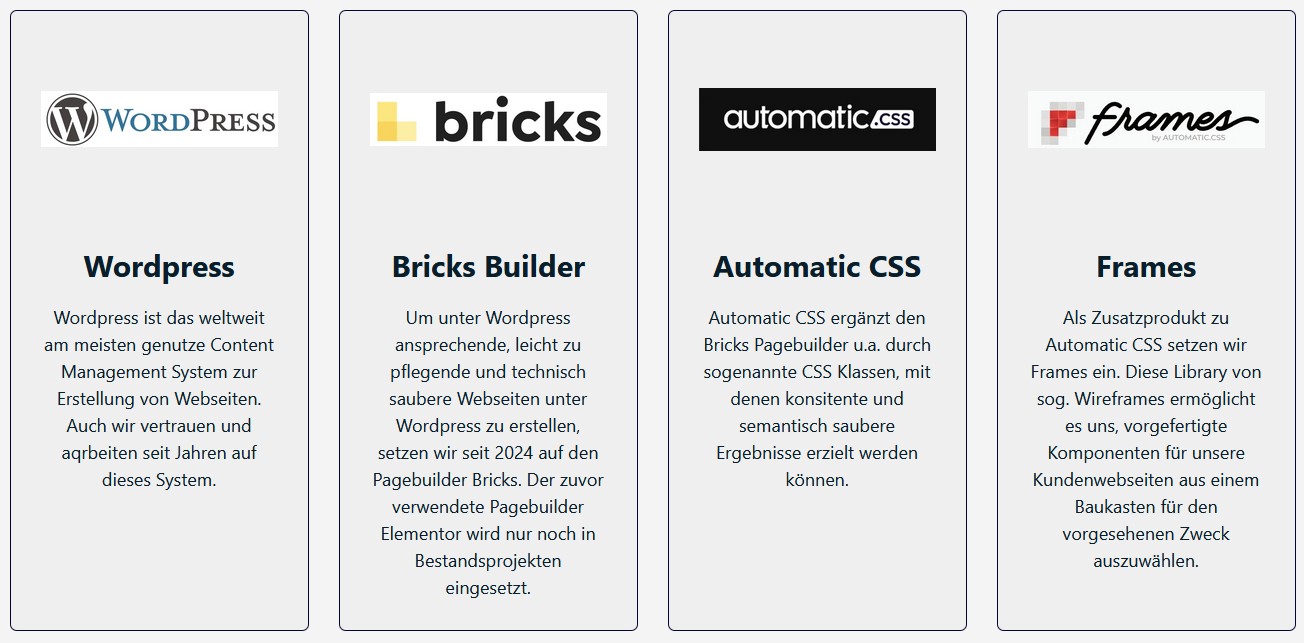As described in previous posts, I am strategically switching from Elementor to Bricks. As a result, I am also changing my approach to creating websites.
I would like to explain here how this came about and what has changed in detail.
After looking at Bricks, I quickly came into contact with the CSS framework “Automatic CSS” and the product “Frames” from the same company. To familiarize myself, I watched numerous videos by Kevin Geary, the founder of Automatic CSS, and very quickly came across his Pagebuilder 101 video course and also the “Inner Circle” community he founded. Inspired by this, I realized that I could no longer continue on the same path.
So what will change, or has already changed:
- I will no longer use predefined templates! Instead, new websites are designed from scratch based on wireframes and then built using frames and automatic CSS. This ensures that the websites are both semantically flawless in their code and consistent in their design. Furthermore, the websites created with it are largely barrier-free, as the code is optimized for the needs of screen readers, for example.
- This also changes the general setup of a project. One key aspect is the so-called “discovery” conversation. This is essential in order to understand what the customer’s goals are that they want to achieve with the creation of the website. The basic design of the homepage is then created in line with this. The subsequent phases are clearly structured and systematically build on each other. This means that the design only takes place after the rough framework has been created and approved on the basis of wireframes. The actual construction of the homepage only takes place after the design has been finalized (e.g. colors, fonts, etc.).
- The content itself, insofar as it relates to specific areas such as products/services, team members etc., will in future only be displayed dynamically on the website via Content Post Types (CPT) using loops. This allows the customer to maintain the form directly in the backend without having to edit it in the frontend. Furthermore, this solution scales better and does not require any design adjustments in the front end.

